Our trek to EBC was one of our longest and most rewarding days on the trek. We departed from Lobuche at 8:30 am and hiked into Gorak Shep at 5164 m, which is the highest ‘village’ that we could stay at before reaching basecamp.
A number of our trekking days started off with clear skies but almost predictably ended in a significant cloud cover with the threat of rain, ultimately obscuring our view of the mountains as we strolled into our new, temporary accommodations. Fortunately for us, this trend was broken on the morning of our push to EBC. For the first on our trip we had a full view of Everest, Nuptse, Lhoste, Pymori, Ama Dablam, and many other peaks.
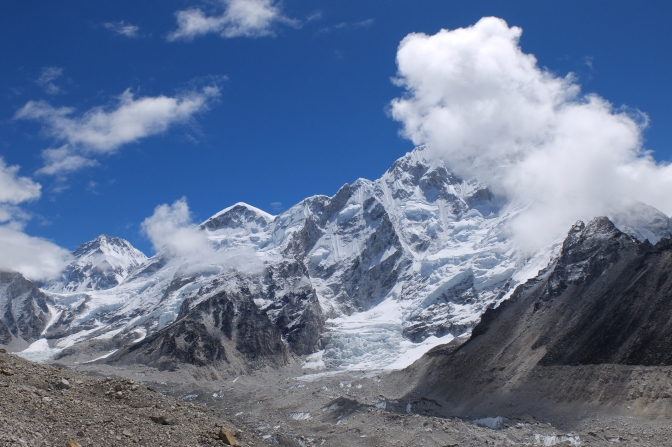
After having lunch in Gorak Shep, we trekked along a rocky ridge for an additional 2.5 hours en route to EBC.
Despite the long push from Lobuche to Gorak Shep and the increasingly thinner air, the prospect of approaching base camp livened the group up considerably. Our hike was continually interrupted by new photo ops and newly emerging landscapes (also it was an excuse to catch our breath).
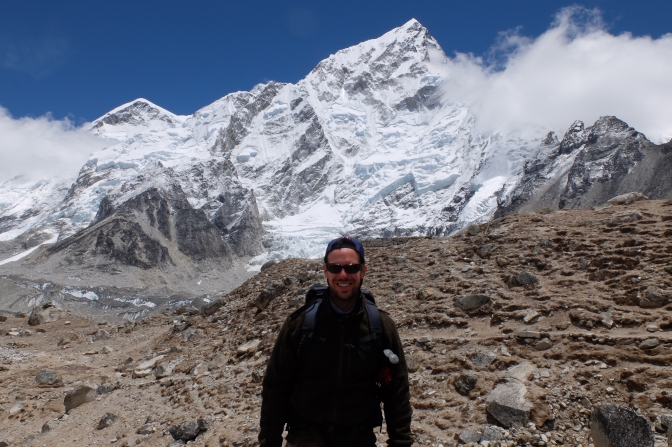

I find it very difficult to explain what EBC was like. In terms of the view, every step closer to EBC provided a new, incredible view of the iconic landscape that is Mt. Everest and the surrounding peaks.
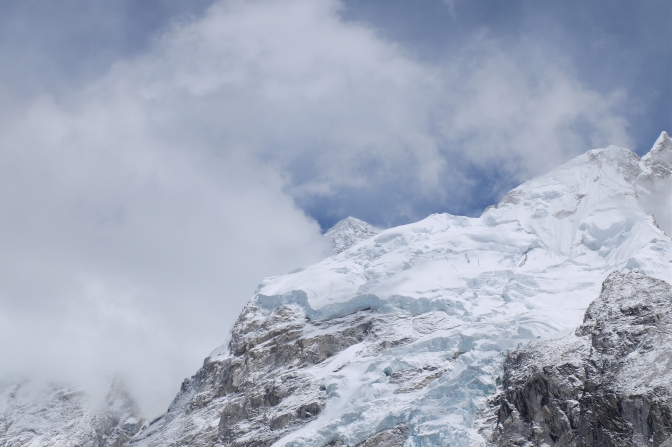
However, what I failed to appreciate until we arrived was that EBC is built upon a massive glacier.
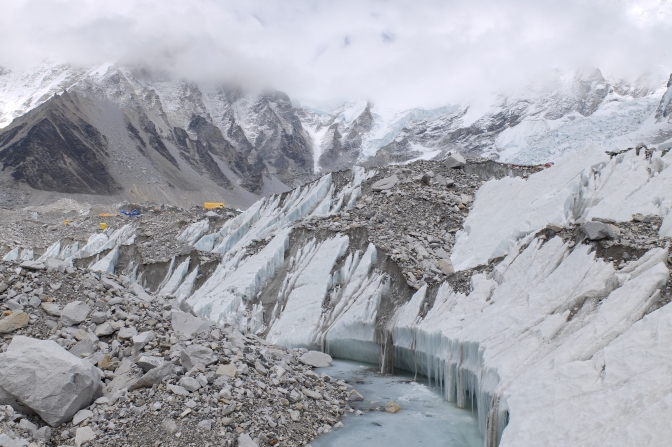
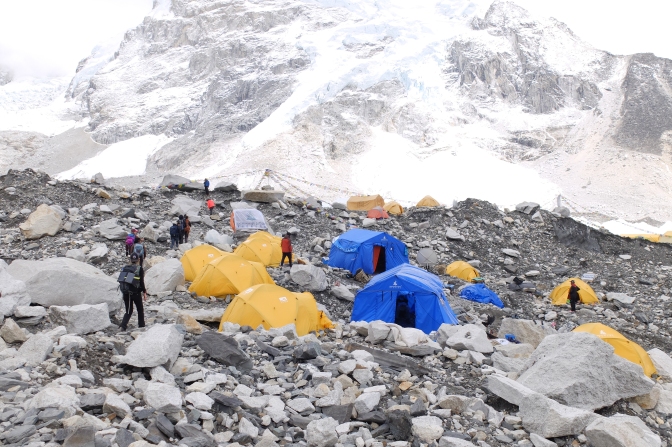
Once we arrived at basecamp we took the obligatory group and individual pictures…
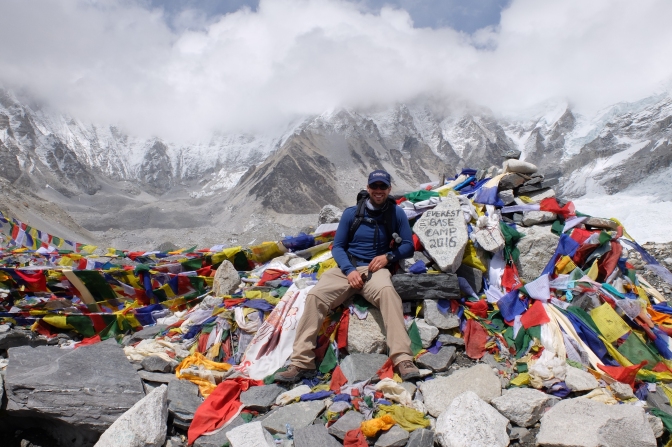
BUT we also stayed true to the purpose of our trek and that was to research the effects of high altitude on the body! Dr. Olav Krigolson and his research team setup their rigs for measuring cognitive function and EEG on a rock that was balancing on a big slab of ice in the middle of basecamp get our high altitude measure of cognitive function and EEG.
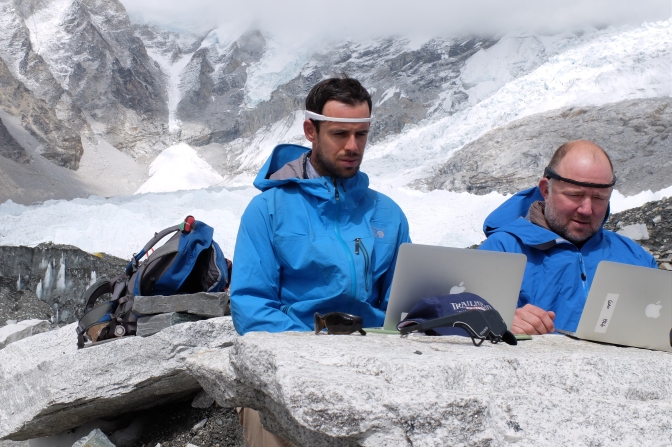
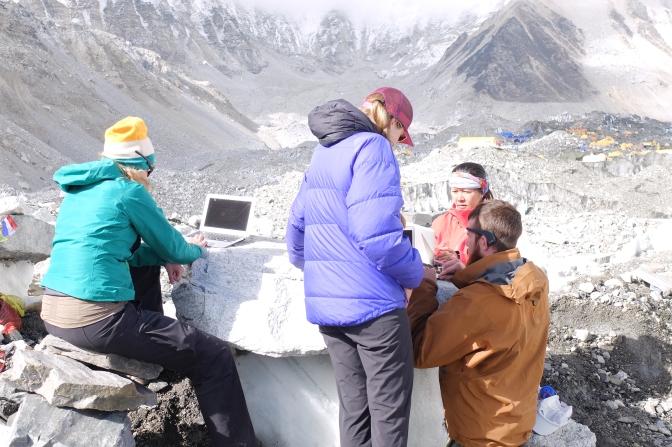
We hiked around the massive glacier and checked the tents of teams that were making summit attempts. Every time an individual summits Everest, a bell is rung a basecamp and while we were visiting, we heard the bell ring twice!
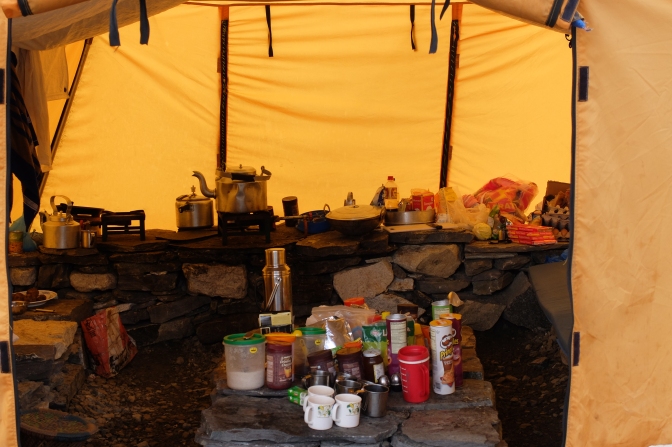

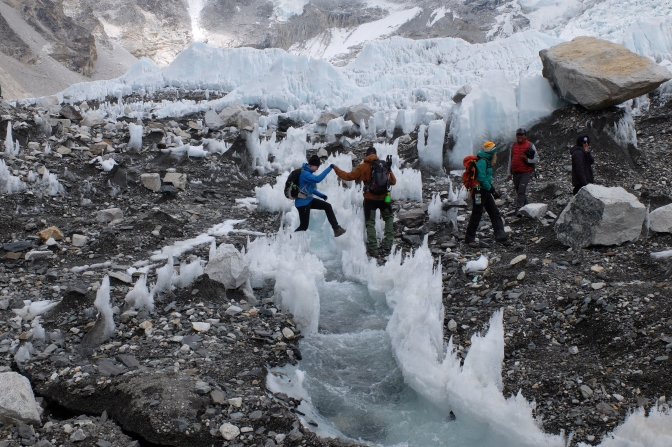
Despite its allure as a trekking destination, basecamp doesn’t appear to be a glamorous place to live. Aside from the vibrant colours of the prayer flags and tents, and the incredible views of mountains surrounding basecamp, the temporary residents aren’t treated to very many comforts of home.
For example, the outhouses are simply tents that are elevated above a big bucket. However, compared to Camp IV, I’m certain that basecamp is resembles to a 5-star beach resort for these mountaineers.
Despite our new altitude of 5364 m and being on the trail for 8 hours with a 2 hour hike back to Gorak Shep ahead, spirits were high coming out of basecamp. It was an incredible experience that was only augmented by the amazing group of individuals that made up our team. Our sleep in Gorak Shep would prove to be one of the most restless and uncomfortable of the trek, with some team members getting sick and one requiring oxygen due to the high altitude. In the morning, those who were feeling well would depart for Kala Patthar to experience the most breathtaking views of the entire trek.




















Hi Jeremy!
Our class is very excited to see/read your posts about your amazing adventure!
We have a few last questions for you…
Avery wants to know what you ate while you were hiking.
Ciara is wondering if there was internet at the “Pyramid” lab
Marc wants to know if you had an altitude sickness
Vanessa wants to know if you slipped or tripped on your hike
Thank you, Jeremy!
We all really appreciate you taking the time to answer our questions. We learned a lot about what it is like to climb the largest mountain in the world. We are also very happy to hear that you have made it back safe and sound!
All the best,
Ms. Dorland and her Grade 2 class 🙂
LikeLike
Hey again grade 2’s, thanks for the questions!
Avery – Nima, our guide, made sure that we were well fed throughout the entire trip. When we were hiking we’d pack our own snacks, like granola bars, trail mix, candy, or chocolate. If we had a very long hiking day, we would stop in a mountain village and have lunch served. Lunch in these places was typically pasta, potatoes, and rice with vegetables (lots of carbs!)
Ciara – there was internet at the Pyramid Lab. There were a lot of satellites connects to the lab, so I imagine that is how they get their internet.
Marc – I did not get sick from the altitude, which I was very happy about! Others on the trip did get sick unfortunately, but felt better once we descended to lower altitudes.
Vanessa – I slipped a few times! In fact, I was probably the first to slip out of the entire team. I fell in the mud on our first day of hiking because I wasn’t paying attention and stepped on a slippery rock. Fortunately, I was not hurt!
Thanks for the questions and thanks for following!
jeremy
LikeLike